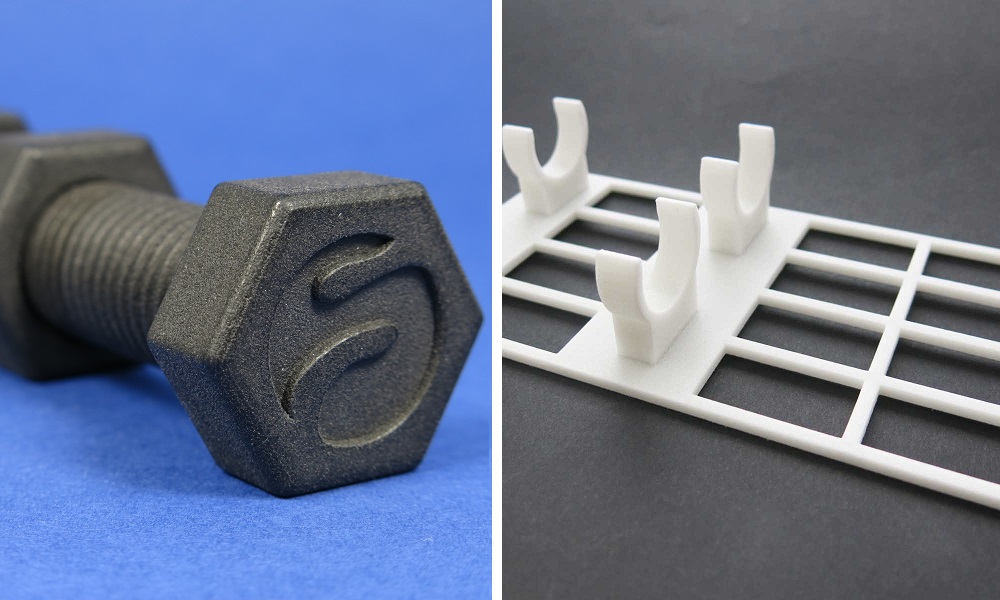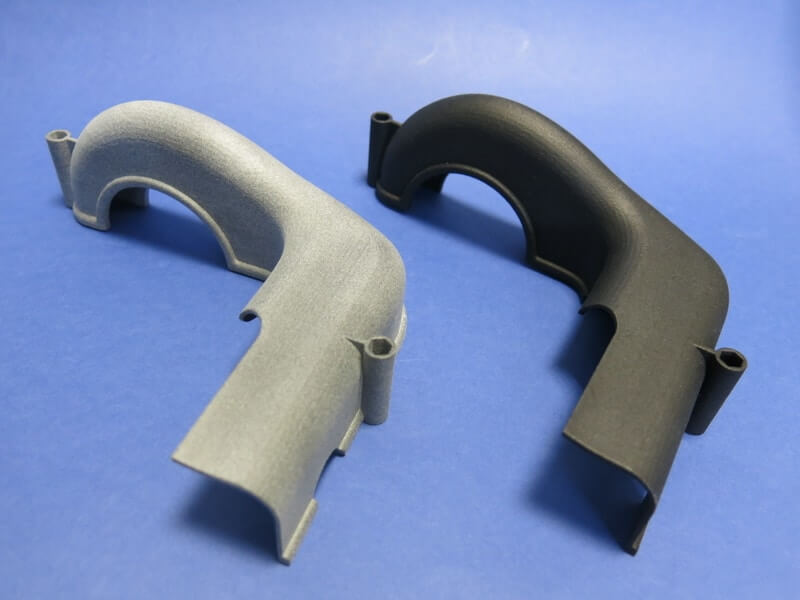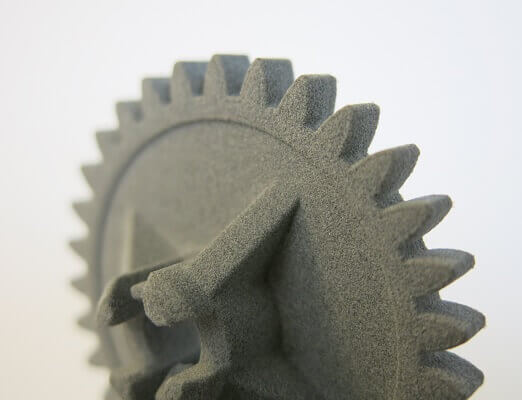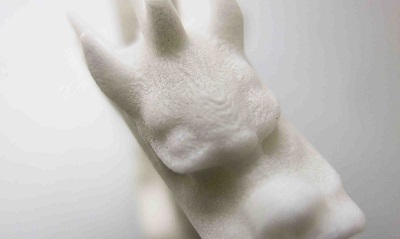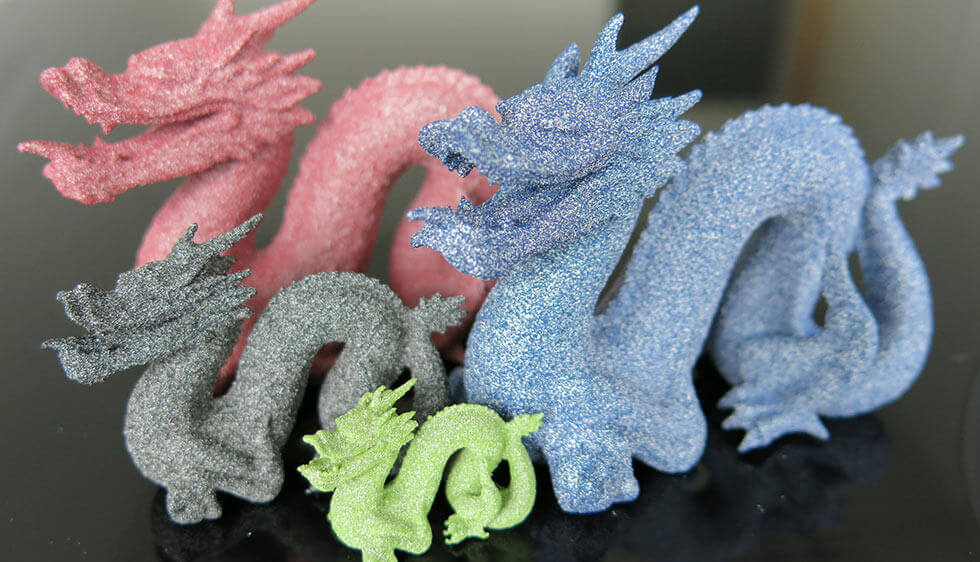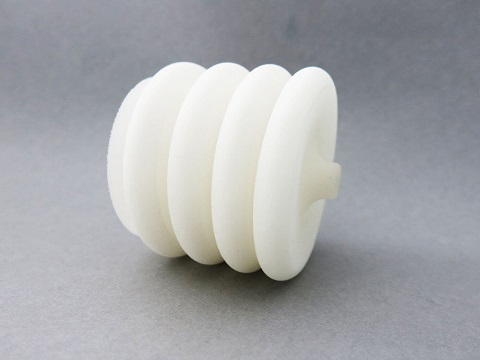3D printing plastic: Which material should you choose?
Posted By Lucie Gaget on Jul 10, 2018 | 0 comments
There are various materials available on the 3D printing market. Choosing the right material for your project can help you to develop the best project ever. This way, your product will be able to fully meet your expectations. Using an online 3D printing service such as Sculpteo will allow you to access professional 3D printing technologies. When it comes to 3D printing plastic, different additive manufacturing technologies and various materials are available. Your choice will totally depend on the nature of your project. Plastic is easy to print and will give you a lot of freedom to create your designs, that is why it can be a real advantage for many different industries and projects. Let’s see what is the best plastic material for your projects.
Choosing the right 3D printing material: An essential step
When starting a new 3D printing project, one of the first questions that you have to ask yourself is: what is the best 3D printing material for my project? And if plastic is the most common material, you still have to make your choice among all the plastic materials available on the market. Indeed, all plastics have their own properties. You will have to find the material that is the most adapted to your project and totally meets your expectations.
Do you need a flexible plastic? What is the size of the parts that you want to 3D print? All of these aspects and many more have to be taken into account when starting a 3D printing project. Indeed, you won’t need the same material if you are developing a project that needs a chemical resistance, a resistance to fire, or a biocompatible material. You will have to compare 3D printing materials to print objects that will match your project, that will have the good tensile strength or a good impact resistance.
3D printing technologies for plastic
Selective Laser Sintering, how does it work?
SLS (Selective Laser Sintering) is an additive manufacturing method creating parts additively, by sintering polymer powder particles in order to fuse them together locally. The parts are created layer by layer thanks to an additive process, using a laser that will sinter the powder according to 3D models. The sintering temperature is of 160°C to 200°C.
Prototyping, production, everything is 3D printable with the Selective Laser Sintering process. Moreover, it offers quite a few different materials. This technology, thanks to its accurate laser, is allowing to create intricate designs, complex geometries and strong parts.
What is HP Multi Jet Fusion?
The other technique that you could choose to print your plastic parts is the HP Multi Jet Fusion technology. This 3D printing method has been developed by HP and is using a multi-agent printing process. How does it work? A fusing agent is applied on a material layer where the particles are destined to be fused together. After that, a detailing agent is added to modify fusing and create fine details and smooth surfaces. In the end, the area is exposed to energy. This process will lead to reactions between the agents and the material to create the final part that you ordered.
This technology is using the Multi Jet Fusion PA12 material, a perfect material for both prototyping and production.
What are the different plastic materials?
To get a professional 3D printing process and a final part that will meet your expectation, at Sculpteo, we are very careful about the quality of the technologies that we offer you.
-
Nylon PA12 (White)
This material is interesting as it can suit experienced 3D printing users as well as beginners.
Using this material, you will be able to print the largest parts, as the maximum size for our 3D printers is 675 x 366 x 545 mm. This is the maximum size for raw and unpolished parts. Do you want to print a bigger project? You can totally print several parts that you will assemble. We know that customers are more and more interested by large-scale 3D printing. Indeed, XL printers are now being developed and will certainly be on the market in the upcoming years. We are going to keep you updated about that!
When 3D printing Nylon PA12, you can totally get a raw part, which will be white, quite porous and granular. This is how parts 3D printed with Nylon PA12 come out of the 3D printer. You can also add finishes to your 3D printed parts with Nylon PA12. You can order a polished and painted part ! You have the choice. Here is an example of polished / unpolished part:
You can, for example, use Color Resist and Color Touch, that will give a nice surface finish and the possibility to choose from a variety of colors. When using this amazing material, you will have the choice among a wide range of finishes that could increase the visual quality of your 3D printed objects, especially if you need to use this plastic material for production. Nylon PA12 is a robust material, perfect if you need a plastic material with mechanical properties. Moreover, it is a low-cost material, which is great if you need it to use Nylon to make some rapid prototyping.
Be careful, the Nylon PA12 is not really heat resistant. Indeed, in terms of temperature, if the Nylon PA12 is subjected to heat above 120°C (248°F), the form of the object can be altered.
-
Multi Jet Fusion PA12
Are you looking for the most economical solution available? The cheapest 3D printing option is here: our non-dyed Multi Jet Fusion PA12 is a low-cost material, with a grey surface, perfect if you are searching for an economical method for your rapid prototyping process. It is very hard to get such a cheap prototyping process with traditional manufacturing methods such as injection molding.
Two other finishing options are available for our Multijet Fusion PA12 material: your parts can be dyed in black thanks to the Color Touch and Color Resist finishes. Thanks to these amazing finishes, you can easily use this material directly for production! It is a robust and mechanical material, which really can be used for prototyping and production. It is not a waterproof material, but it is water resistant. The material is food-safe and durable, and a little bit more heat resistant than Nylon PA12. But if this plastic is subjected to heat above 187°C, the form of your object can be altered.
This material can be used for any kind of projects, it can be solid or slightly flexible, it will depend on the wall thickness that you designed for your 3D models. Actually, it is great both for prototyping and production. It is not an expensive material, but it is allowing to manufacture resistant finished parts. Moreover, the MultiJet Fusion PA12 material is light stabilized and stable in all weathers, which is practical if you need to create a device able to resist external conditions.
-
Nylon PA11/12 (Grey)
The Nylon PA11/12 material is a grey material. It is also printed with the Selective Laser Sintering technique with a fine grey polyamide powder. It is both flexible and solid. For a flexible part, the minimum wall thickness will be 0.8mm.
The 3D printed objects in this material have a wide range of uses, from mechanical, ornamental, to education.
-
Nylon 3200 Glass-Filled
The Nylon 3200 Glass-Filled is made from a mix of polyamide powder and glass beads.The surface of your part will not be as accurate as with Nylon 3D printing, and it will be white and porous. Keep in mind that you will not be able to create very detailed parts using this specific material. But the parts you will get are extremely robust.
This 3D printing material is perfect for projects with technical parts, needing resistance and loads, so it can be used to 3D print mechanical objects subjected to stress. Nylon 3200 Glass-Filled has some interesting mechanical properties: it is an engineering material that is used for technical parts that require particular stiffness, high heat distortion temperature, and low abrasive wear.
-
Alumide
This 3D printing material is not completely made of plastic, it is actually a mix of polyamide powder and aluminum particles. The surface of 3D printed alumide parts is porous and shiny. This material can be used to create projects that require a metallic appearance. The technical specifications of this material are quite similar to other polyamide materials, unless that the minimum thickness for the walls is 1.5mm.
You also have the possibility to choose the color of your part while printing using the alumide material. You can choose between grey, black, blue, red or green parts, polished or not.
-
PEBA 2301
PEBA is a flexible plastic. If you are looking for a plastic with an amazing elasticity for your 3D printing project, PEBA is your solution. This rubbery plastic material is really resistant and can easily resist to stress and fatigue. The material is porous and granular.
This plastic is a great technical material, that has a very good chemical resistance and a durability. This material can actually be used in various sectors from medical to automotive. The parts printed with this flexible material have a really good quality.
If you want more details and information about these amazing materials, don’t hesitate to check our 3D printing material pages!
There are also other 3D printing plastic techniques, such as FDM (Fused Deposition Modeling), that will allow you to print PLA and ABS plastic, (also called Polylactic Acid
Acrylonitrile Butadiene Styrene), for example. That can be a solution, but keep in mind that these methods, using desktop 3D printers, will not give you a result as good as with professional 3D printers.
Some 3D printed plastic projects
Here is a selection of 3D printed plastic projects that could inspire you for your next additive manufacturing projects. What are the type of projects that you could create using these amazing plastic materials?
3D printed plastic tools
Plastic materials can be really useful to 3D print devices such as tools. Marc Soubeyrand used 3D printed plastic to manufacture his custom-made tools. Did you know that additive manufacturing was a good solution to make your own medical tools and that you could make them using plastic materials? Indeed, the surgeon uses Nylon PA12 to create devices such as auxiliary tools used during surgeries.
3D printed glasses by Octobre 71
Polyamide is economical and reliable, allowing to create custom-made projects, which is a big advantage for the fashion industry. That is precisely why the company Octobre 71 is using 3D printed plastic for their glasses.
3D printing plastic has many benefits for the optic industry. For example, thanks to the Color Touch finish that we are offering at Sculpteo, it is easy to make custom made, colorful and resistant 3D printed glasses, with a smooth surface and a satin look.
Prototyping with HP Multi Jet Fusion: Kupol Project
Plastic is also quite useful for prototyping projects, as it can be an economical solution, allowing to create really accurate designs. Gabriel Boutin used this plastic material to create the different iterations of his 3D printed bike helmet project. It is the perfect material for this kind of projects. The Multi Jet Fusion PA12 material can be really solid or slightly flexible, depending on the wall thickness that you will design with your 3D software. Be careful to always respect the minimum thickness specified on the material page, it is really important to create viable 3D printed objects.
More information about this great project in the video below:
We hope that this little plastic material guide will help you. As you can see, these 3D printing materials have a lot of advantages. Have you made your choice? Share with us what is the best 3D printing plastic material for your projects!
If you want more articles about the use of the different 3D printing materials, don’t forget to subscribe to our weekly newsletter, we are going to share all of our tips with you!


 Connect with Google
Connect with Google Connect with Facebook
Connect with Facebook